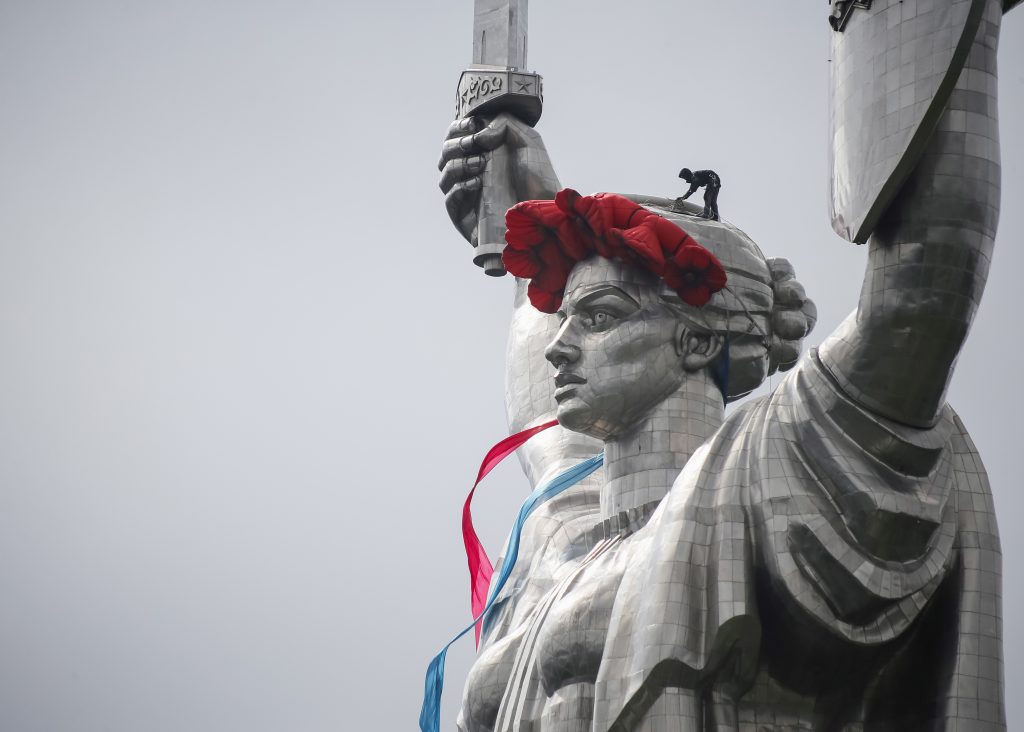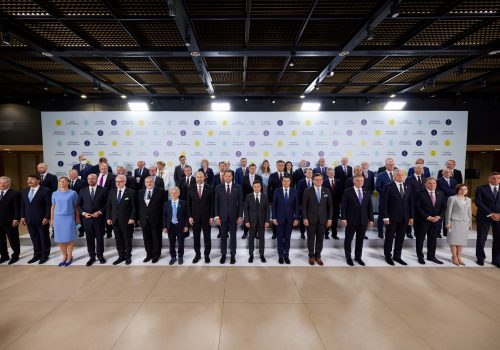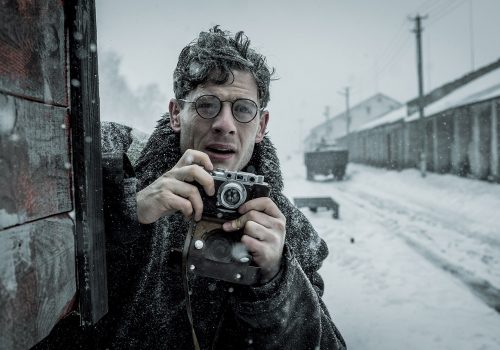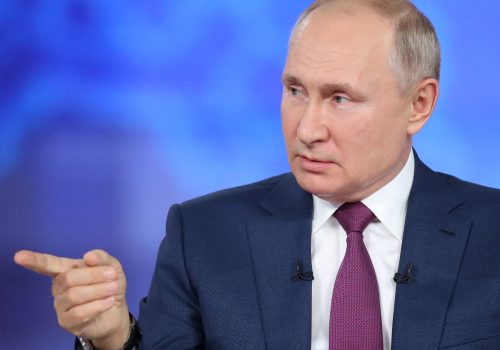When Ukraine became central to the American impeachment procedure of late 2019 and early 2020, I found myself obliged to answer numerous questions about the country from journalists and the general public alike. They boiled down to one query: “Why Ukraine?”
My new collection of essays seeks to answer this question by examining the history of Ukraine and present-day Ukraine’s evolving relationship with its own history. As many of the essays show, history is central to Ukraine’s current war with Russia and its relations with the West. With only one exception, these essays were all written in the last decade, which has witnessed enormous change in Ukraine.
During this period, Ukraine has experienced the Maidan protests of 2013–14, a radical change of government, Russian aggression, the loss of Crimea, and the ongoing war in the Donbas. None of these developments could have been predicted a decade earlier, and all inevitably changed the self-understanding of Ukrainian society and shaped attitudes towards the country’s past.
It is no exaggeration to say that in the last ten years, history has taken center stage in Ukrainian politics and spilled over to the European and world scene. In fact, battles over Ukrainian history have become part of a very real, not virtual, war.
Stay updated
As the world watches the Russian invasion of Ukraine unfold, UkraineAlert delivers the best Atlantic Council expert insight and analysis on Ukraine twice a week directly to your inbox.
A wide range of landmark events in Ukraine’s recent past demand attention. In January 2010, a Ukrainian court ruled on the criminal responsibility of the Soviet leadership for the Holodomor, the Great Ukrainian Famine of 1932–33, and found Joseph Stalin guilty of causing the death of close to four million Ukrainian citizens. In the same month, just days before stepping down as president of Ukraine, Viktor Yushchenko posthumously bestowed the highest state award, the Hero of Ukraine star, on Stepan Bandera, a radical nationalist leader of the first half of the twentieth century who was assassinated by a KGB agent in 1959.
Yushchenko’s decision aroused numerous protests in Ukraine and abroad. His successor, Viktor Yanukovych, later allowed a Donetsk regional court to rescind the award. Yanukovych did not stop there. Bowing to Russian pressure, he refused to refer to the Holodomor as an act of genocide, despite the earlier decision of the Ukrainian parliament on that issue. In these years prior to 2014, Ukraine was in turmoil about its history. The political compass needle swung from pro-Russian to pro-Soviet to pro-nationalist, depending on the head of state.
Before the end of the past decade, Ukraine would undergo a process of radical decommunization. This was driven at least in part by the incompatibility of post-Soviet historical narratives that presented the Soviet period in a predominantly positive light and the Holodomor narrative, which portrayed the Soviet regime as a genocidal monstrosity. Another major factor contributing to decommunization was the drive to rehabilitate the story of the nationalist-led Ukrainian Insurgent Army, which fought for the independence of Ukraine during and after World War II.
This decommunization campaign has changed the map of Ukraine in highly dramatic fashion. It has resulted not only in the demolition of monuments to Lenin and other leaders of the Soviet regime, but also in the mass renaming of streets and squares along with entire villages, towns, and cities.
Since 2014, Russian aggression has turned Ukrainian history into a battleground, demanding a response from Ukrainian society on a number of historical fronts.
Russia’s use of imperial history to justify the annexation of Crimea and, in particular, Moscow’s failed attempt to split Ukraine by creating the quasi-state of “New Russia” (“Novorossiya”) based on a czarist-era imperial province of the same name, rekindled long-standing Ukrainian interest in the history of the Cossacks, who settled the steppes of southern Ukraine prior to Russian expansion there in the eighteenth century. Meanwhile, Russia’s use of Soviet mythology in its aggression against Ukraine, especially that of the “Great Patriotic War” (the Soviet component of World War II), provided additional fuel and rationale for Ukraine’s decommunization campaign.
Eurasia Center events

My new essay collection seeks to explore how evolving Ukrainian attitudes towards the country’s past are shaping contemporary Ukrainian society and influencing Ukraine’s involvement in international relations. This remains relatively unexplored territory. Indeed, the volume begins with an introduction suggesting the need for a new national history of Ukraine that would take account of the main historiographic trends and achievements of the past few decades.
Essays addressing Ukraine’s Cossack past seek to explore how Cossackdom became the founding myth of the modern Ukrainian nation, while also looking at the ways in which Ukrainian society dealt with the imperial mythology of the Battle of Poltava (1709) and the depiction of the Ukrainian hetman Ivan Mazepa, who rebelled against the Russian Empire, as a latter-day Judas.
Inevitably, much attention focuses on what was the bloodiest century in Ukrainian and European history, the twentieth century. This includes a reinterpretation of the Russian Revolution as a revolution of nations (“How Russian was the Russian Revolution?”), and addresses the Great Ukrainian Famine of 1932–33 and Ukraine’s experience at the epicenter of WWII.
The third section of the volume, “Farewell to the Empire,” includes essays on Ukraine’s post-Soviet history and politics of memory that provide a context for understanding the Russo-Ukrainian War and its contribution to major changes in Ukraine’s memory politics.
I have also sought to explore evolving visions of Ukraine’s European future. This meant reconstructing the image of Europe as it appears in the writings of Ukrainian intellectuals from the nineteenth century on, while arguing that the notion of Europe has been constructed as an antipode to Russia and continues to function in that capacity with regard to Ukrainian history and identity.
Since 1991, application of the term “Eastern Europe” has shifted from the Soviet satellite nations of the Cold War era to the former Soviet republics of Ukraine, Belarus, and Moldova. This has coincided with the rise of Ukraine as a key battleground between the West and Russia, producing a new understanding of Europe’s frontiers that is now being contested in Ukraine.
The essays collected in my new volume do not attempt to encompass all of Ukrainian history. I believe, however, that they can help to answer the internationally important question of why Ukraine has become so central to the East-West confrontation of the post-Cold War era.
Serhii Plokhy is the Mykhailo Hrushevsky Professor of Ukrainian History and the director of the Ukrainian Research Institute at Harvard University. This article is adapted from the Introduction to the author’s forthcoming book, The Frontline: Essays on Ukraine’s Past and Present, which is scheduled for release in September 2021.
Further reading
The views expressed in UkraineAlert are solely those of the authors and do not necessarily reflect the views of the Atlantic Council, its staff, or its supporters.

The Eurasia Center’s mission is to enhance transatlantic cooperation in promoting stability, democratic values and prosperity in Eurasia, from Eastern Europe and Turkey in the West to the Caucasus, Russia and Central Asia in the East.
Follow us on social media
and support our work
Image: A worker attaches a giant poppy headdress to Kyiv's Soviet era "Motherland" WWII monument as part of Ukrainian efforts to update commemorations of the conflict. (REUTERS/Gleb Garanich)




